Japan has taken drinking and snacking to an art form. And there are even words for snacks made for drinks like otsumami, sakana, and shuko.
Luckily, you don’t have to go to Japan to partake in these delicious combos. In this sponsored review, I explore Kokoro’s Otsumami Care Package. It’s loaded with some of the best Japanese snacks to eat with sake, beer, wine, and more.
I break down each care package’s item and recommend pairings based on extensive taste testing.
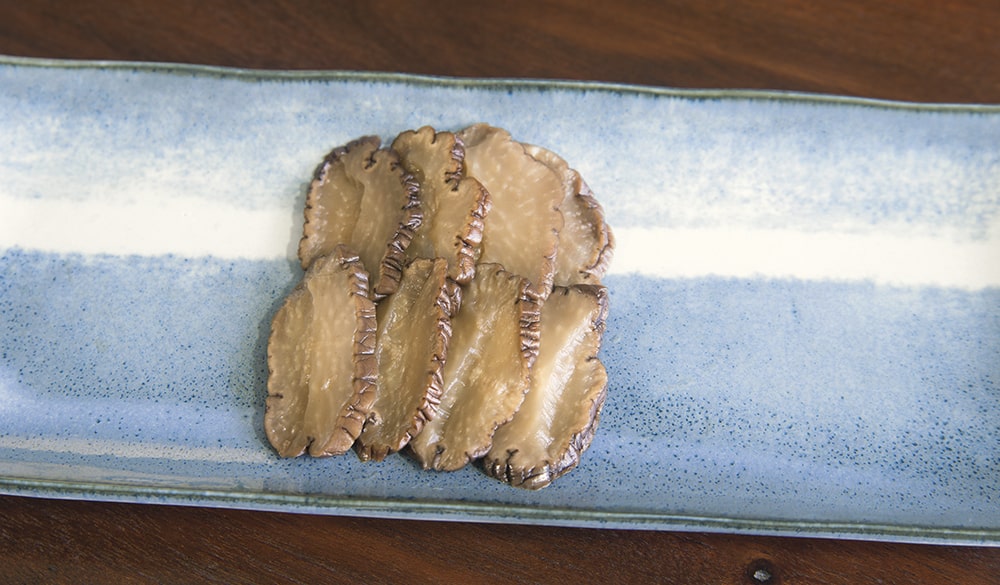
Iburigakko – Akita Otsumami
Iburigakko is smoked and pickled daikon radish. It’s an Akita specialty that developed due to the harsh winter climate of the prefecture. It’s a seasonal food preserved for consumption in winter.
In 2019, iburigakko gained Geographical Indication (GI) protected status. It’s kind of like Akita’s unique version of takuan pickles. Pretty cool.
Making iburigakko is a multi-step process. The daikon is first smoked and dried over irori (open hearth fires) for up to two days. Oak or cherry wood is used for its unique and fragrant aroma.
Then the smoked daikon is pickled in rice bran for a minimum of 40 days. Here it pickles and matures during the low temperatures of winter.
Kokoro’s iburigakko are produced by Yumekikaku. They only use four ingredients: daikon radish, rice bran (nuka), sugar, and salt. And they ferment the daikon for over 100 days!
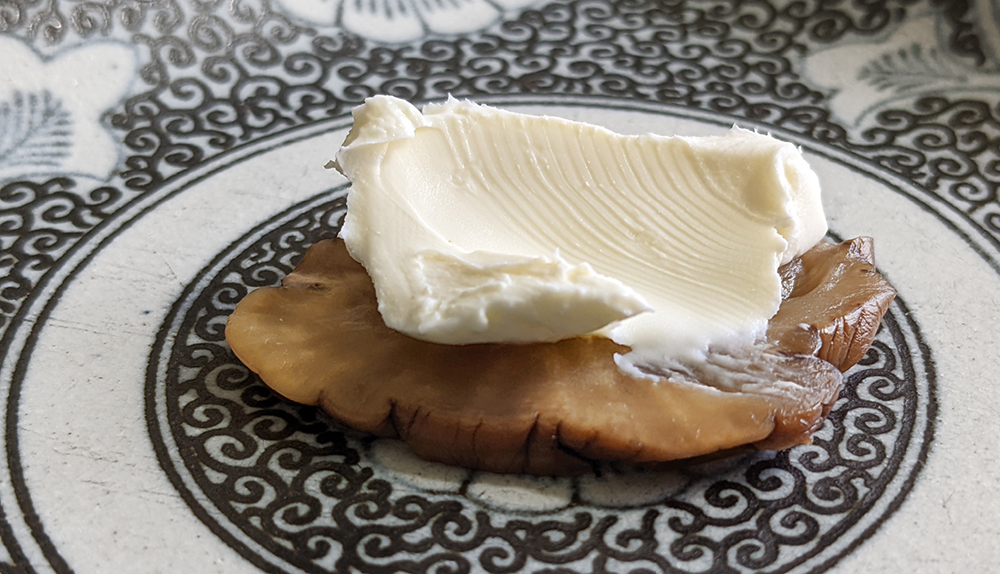
Tasting Iburigakko
This tawny brown pickle is fragrant and smoky. It kind of reminds me of a campfire and smoked cheddar cheese.
Iburigakko has a snappy texture and a mild flavor. It’s a little sweet, very savory, and a bit meaty. I’m hooked!
It’s traditional to add cream cheese or some other soft cheese to iburigakko. So I tried it out with some plain cream cheese. And it’s delicious!
And there are many other ways people enjoy iburigakko. This includes wrapped in meat, with rice, chopped in mashed potatoes, and sandwiches.
But how does it taste with alcohol?
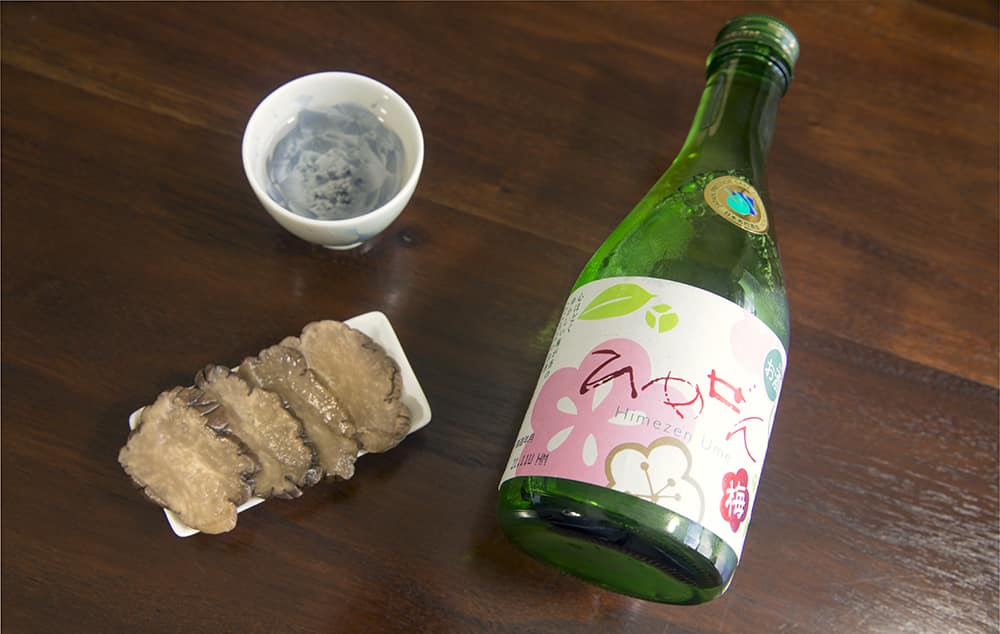
Iburigakko Drink Pairings
Sake is an ideal pairing with iburigakko, with or without the cheese.
Akita sake is a great place to start. Iburigakko ages in rice bran. And Akita sake is a rice-based beverage with rice bran as a byproduct. So it makes sense to combine these regional specialties.
Amanoto, Aramsa, Akitabare, and Dewatsuru are just a few brands to try.
In general, I found fruity sake works best with iburigakko.
Malty beer and iburigakko are another must-try. Every beer I tried worked well.
But if you want to nail it, go for a smoky rauchbier. Schlenkerla is arguably the most well-known producer. And their rauchbier is rich, malty, and will harmonize with iburigakko. But if you like a lighter beer, try Schlenkerla Helles Lagerbier instead.
Herbaceous wines like Gruner Veltliner and New Zealand Sauvignon Blanc are also good pairings. And so is dry Riesling.
But the best pairing I tasted came as a total shock: plum wine. The sweet plummy umeshu and the smoky iburigakko are an amazing match.
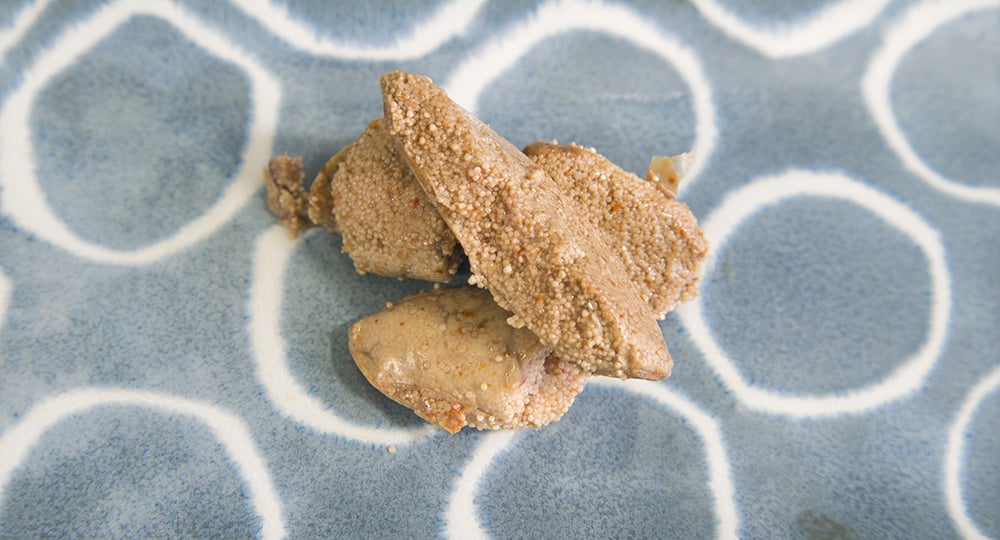
Miyagi Smoked Mentaiko
Mentaiko is salted and marinated cod roe. It’s essentially a flavored version of tarako and is an uber-popular Japanese delicacy used in all kinds of dishes. And once again, it’s an excellent otsumami.
Kokoro’s smoked mentaiko are made in Miyagi by Minato Suisan. The company marinated the roe in salt, sugar, mirin, bonito shavings, kelp, and chili peppers. And uniquely, this mentaiko is smoked using sakura wood chips for added aroma and flavor.
Most mentaiko is a manufactured food. But Minato Suisan produces theirs by hand. So it’s an artisanal Japanese product.
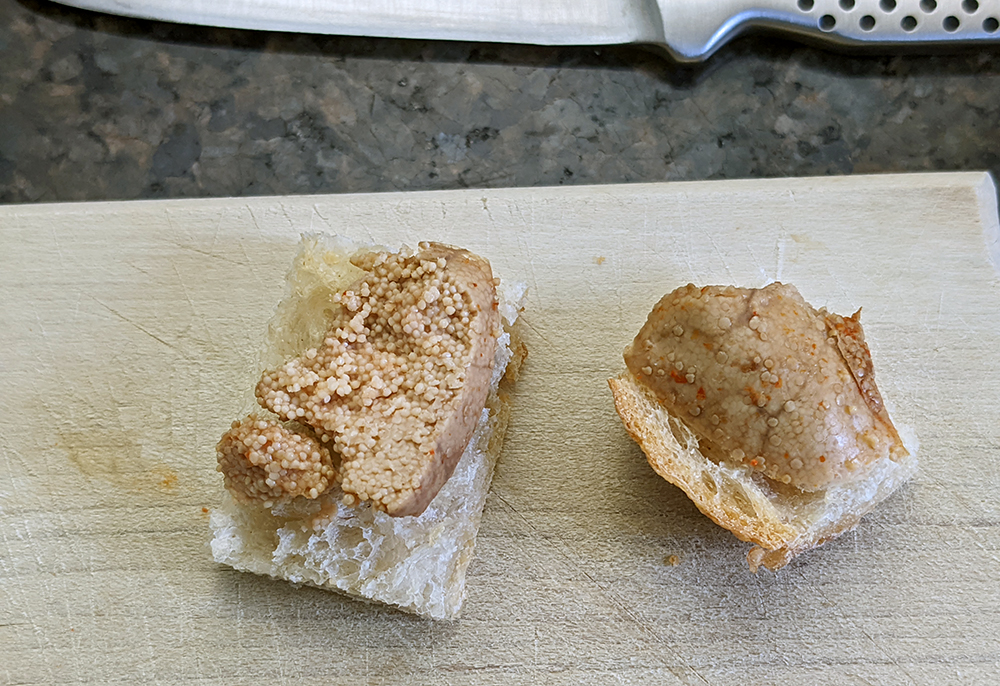
Smoked Mentaiko Flavor
The aroma of this mentaiko reminds me of smoked oysters. And the texture is like crumbly cheese.
There’s a bit of tobiko-like crunchiness too.
Mentaiko looks like it will have a strong flavor, but it’s very mild. There’s a hint of smoke and brine. And it tastes kind of like fresh bonito flakes.
Mentaiko is delicious on its own. But it’s also common practice to put it in onigiri, on ochazuke, and over crackers. And it’s also popular to mix mentaiko in pasta.
But this delicious mentaiko could get lost in heavier dishes. So I enjoyed it on its own and over a tiny piece of toasted sourdough.
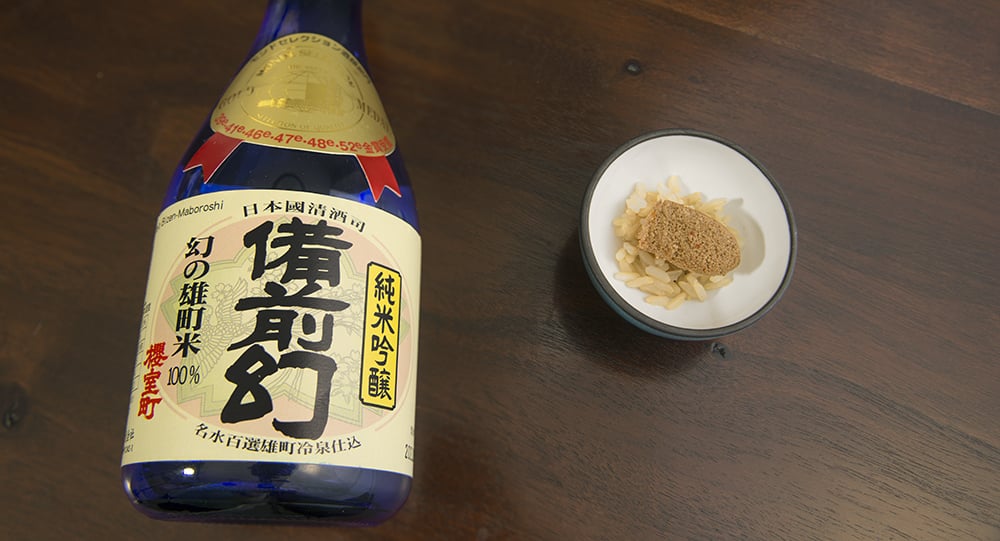
Pairing Smoked Mentaiko
Every drink I tried with mentaiko worked well.
Mentaiko is one of the best Japanese snacks to pair with sake. But I like it the most with a slightly fruity junmai ginjo. The light body and fine balance between savory and fruity is a perfect match.
On toast, a more savory junmai sake was the best match. But every sake I tried was a solid combo.
Once again, smoky rauchbier gets it done. It’s semi-sweet and malty. And this complements the smoky, savory, and spicy mentaiko.
Other malty mentaiko beer pairings include British pale ale, ESB, and German bock. Finally, Baeren Classic is an excellent Japanese craft beer to try with smoked mentaiko.
One of my favorite combos was imo shochu. In particular, a slightly funky one made with black koji. I recommend a little water or a few ice cubes to cut the strength.
And if wine is more your thing, I recommend something with hints of brine and smoke. Muscadet Sevre et Maine sur lie comes to mind. A juicy Beaujolais will also work if you’re into reds.

Sansho Teriyaki Sardine Jerky from Aichi
Sansho teriyaki flavored sardine jerky is the ultimate sakana. And it’s also an umami-rich snack that is uniquely Japanese.
This product is a type of tsukudani made in Aichi by Hiramatsu Foods. Japanese sardines (iwashi) simmered for three days in traditional teriyaki.
Ingredients include shoyu, hon mirin, sugar, and ginger. And sansho, or Japanese pepper, is also added. The sansho adds a unique, citrusy, and spicy flavor.
How do Sansho Teriyaki Sardines Taste?
Amazing! Let me explain.
This teriyaki iwashi jerky is aromatic. But it’s not pungent or fishy. Instead, it smells like the sea. And the citrusy, spicy sansho influence is present with hints of shoyu (soy sauce).
For jerky, the texture is quite tender. There’s no fishy flavor at all.
These sardines are savory and sweet. And the sansho shows up on the finish with a peppery note.
I loved these!
There are a lot of ways you could enjoy teriyaki sardine jerky. I prefer as-is. But you can put them on a salad, rice, or over bread or crackers.
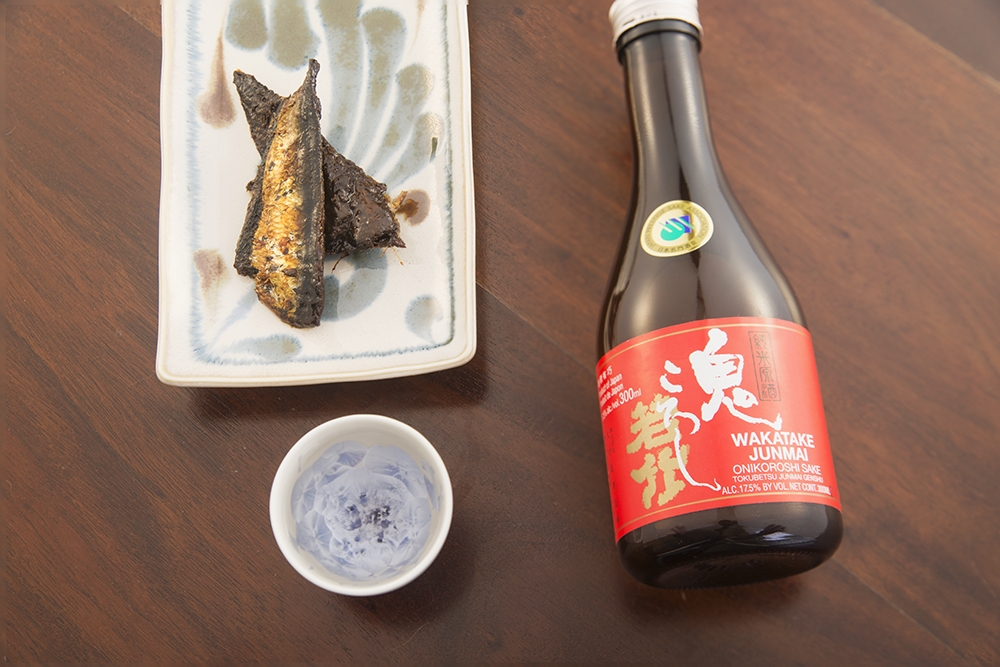
Pairings for Teriyaki Sardine Jerky
It seemed like everything I tried with these sardines tasted great.
You can’t go wrong with sake. Fruity and delicate styles like daiginjo worked really well. But my favorite was a full-bodied and savory junmai genshu.
Many beer styles will work too. In general, I recommend a beer that is malty and relatively rich. Brown ale, amber ale, ESB, porter, and Marzen can all work. Food-friendly Saison also comes to mind. And if you can find it, Iwate Kura Sansho Ale is worth a try.
Slightly sweet wines are also in play. Think Kabinett riesling, Vouvray, and gewurztraminer. Fruity reds with low tannins are also a nice match. Zinfandel, Mendoza Malbec, and Pinot Nori will pair with these sardines.
But my favorite wine pairing was amontillado sherry. This dry, nutty, and rich fortified wine complemented the flavors of the sardines and sansho. And it finishes sour and refreshing. My guess is an oloroso would pair well too.
Finally, I loved this teriyaki sardine with Amami shochu. This type of shochu is made with Okinawan black sugar and has a mild, rum-like flavor. Another decent pairing was sweet potato shochu.

Smoked Shimadofu – Okinawan Tofu
Okinawan tofu, or shimadofu, is firm with a rich flavor and more protein. But this particular product from Shokuno Kakehashi is a lot more than that.
First, it’s aged with rice koji. Then it’s smoked using aromatic cherry wood chips. Other ingredients include miso, rice, sugar, kelp extract, and nigari.
On paper, this artisanal tofu from Okinawa sounds like a flavor bomb. But I was in for a surprise.
The Flavor of Smoked Shimadofu
The outside of this tofu is a very dark purple. It’s aromatic and smells both like beef jerky and a campfire.
Inside, the color is much lighter – a pale orange. It cuts and looks like a semi-firm cheese.
I was expecting an intense flavor, but it’s actually pretty mild. The texture and flavor are a lot like Gouda cheese. It’s slightly savory with a bit of salinity.
Hands-down, this is my new favorite tofu.
I enjoyed it entirely on its own. But smoked shimadofu is also recommended as a cheese substitute on crackers, salads, etc.
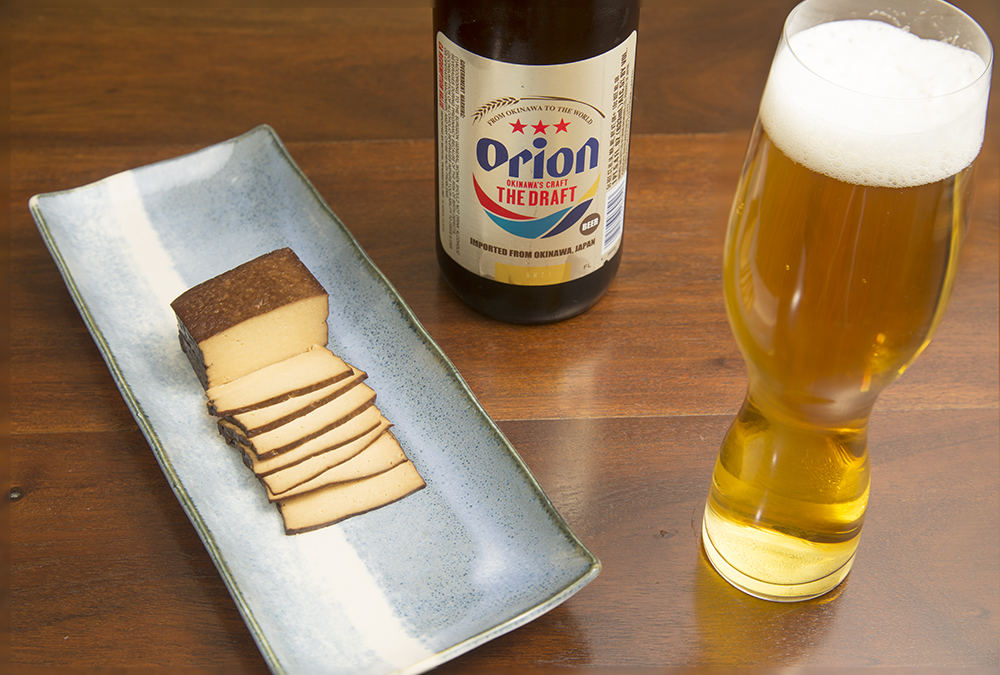
Pairing Smoked Okinawan Tofu
Again, I started this culinary experience with sake. Everything I tried worked. It was very good with a slightly savory tokubetsu junmai. And I like it more with a fruity and soft Kyoto daiginjo.
Beer is another rock-solid pairing option. All the lighter lagers I tasted great. But dark beers with a lactic quality are also worth a shot – Guinness, for example.
Awamori is Okinawa’s version of shochu. And this savory, complex spirit can make a great smoked tofu pairing. I recommend a rich-flavored traditional brand like Mizuho with a splash of water or ice.
If you’re into wine, juicy reds can be a great combo. Pinot Noir, Beaujolais, and barbera come to mind.

Hokkaido Baked Konbu
Crunchy baked konbu is a healthy and umami-rich snack. And it’s not just delicious. It’s perfect for pairing with alcohol, and even in alcohol.
Hinode Shokuhin makes this seaweed snack. The company is located in Nemuro City, Hokkaido, and uses locally harvested konbu.
The frigid and fertile waters of Hokkaido are the perfect environment for kelp. So Hokkaido is Japan’s leader in konbu production.
The kelp seasons in a broth with soy sauce, dried bonito (katsuo), shiitake, sugar, salt, and vinegar. There are no preservatives or industrial additives. After seasoning, the konbu is baked to give it a crunchy texture and umami-rich flavor.

What Does Baked Konbu Taste Like?
This seaweed snack looks like regular dried konbu. But it smells nutty and sweet.
Its texture is light and crispy. And the flavor is salty, semi-sweet, and savory. Notes of shiitake and bonito are subtle. Overall, this baked konbu is super snackable. They’re like healthy seaweed chips but not oily.
It’s recommended to enjoy these as-is. But one other Kokoro suggestion really stood out. And I had to try it.

Crunchy Konbu Drink Pairings
Soaking a piece of crunchy konbu into a warm sake is a must-try. I went with a semi-sweet honjozo, my favorite profile of warm sake.
After about a minute, the sake had taken on a greenish color and an oceanic smell. It was rich, briny, and loaded with umami. I highly recommend trying this. Just don’t let it soak too long.
Overall, I think most sake will pair with this Hokkaido otsumami. But I found savory sake worked a little better. And if you really want to dial it in, go with a Hokkaido sake like Otokoyama Tokubetsu Junmai or Taisetsu Junmai Ginjo.
Beer is another versatile beverage. And it’s usually excellent with salty snacks. Light Japanese lagers like Sapporo Premium and Asahi Super Dry are really good pairings.
And don’t sleep on wine with these seaweed snacks. Mineral-driven and fresh oceanic wines like Muscadet, Chablis, and Albarino are perfect for the wine-lover. Dry sparkling wine will work too.
One tasty pairing that surprised me was rice shochu. It accentuated the briny, herbal flavor of the seaweed.
And finally, slightly peaty, malt whisky is an off-beat but delicious konbu combo. Hokkaido’s Nikka Yoichi is an ideal fit. And Hakushu 12, Akashi Single Malt, and many Speyside Scotch whiskies are too. But this pairing works better with whisky on the rocks or mizuwari.
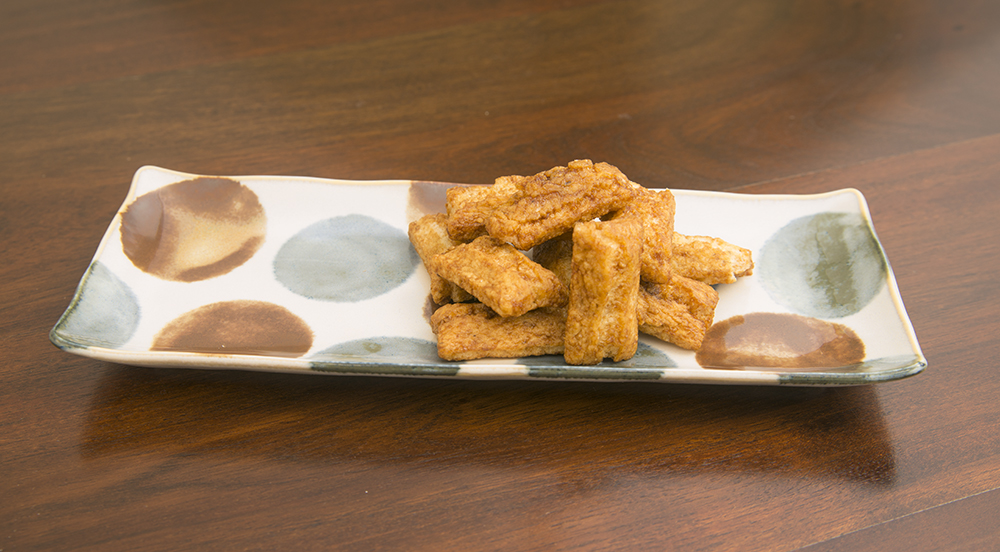
Brown Rice Mochi Okaki from Chiba
Okaki is a classic Japanese snack and beloved otsumami. It’s a big and chunky mochi rice cracker. And many different types of seasoning are added.
This particular brand is from Seijibe of Chiba. They’re a 5th-generation rice farm located near the Tone River. And astoundingly, they don’t use fertilizers or pesticides.
Their okaki uses brown rice (genmai). And it’s flavored with tamari, mirin, konbu, and kibizato sugar.
What Does it Taste Like?
This rice cracker has a faint, ricey smell. But it’s the flavor that shines.
The texture is crunchy but not hard. It’s kind of like a Cheetoh without the greasy feel. And the flavor is remarkable. It’s subtle, but there’s so much depth.
Notes include sesame seed, toasted brown rice, popcorn, and broiled chicken skin. Yes, chicken skin!
Like the crispy konbu, this is another sakana that’s best on its own.
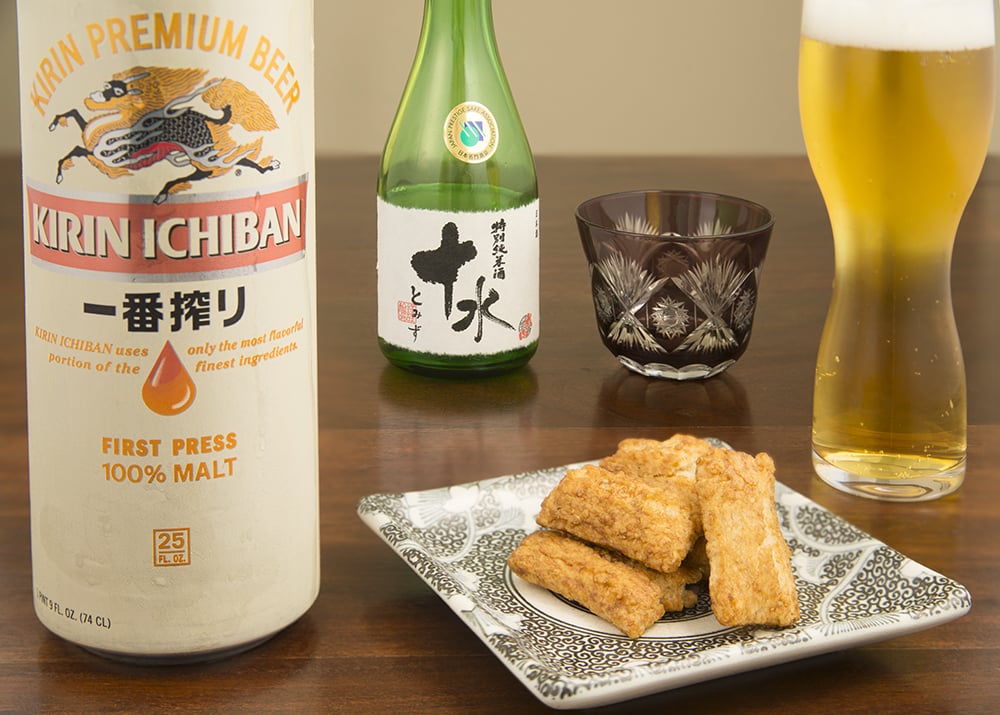
Brown Rice Okaki Beverage Pairings
Most drinks that aren’t too strong will pair well with this crunchy mochi cracker.
And every sake I tried worked. But the winner was a savory and ricey junmai. And a slightly savory junmai ginjo was runner-up.
I loved this rice cracker with beer. Light lagers like Asahi Super Dry, Sapporo, and even Coors all worked well. But my favorite was Kirin Ichiban. You could also reach for a maltier beer like a biscuity brown ale, ESB, or Dunkel.
A Japanese whisky highball is another bubbly, malty beverage that will work perfectly with this snack. And a savory, Iki Island barley shochu is also a fine spirits combo.
If you’re into wine, a dry and yeasty sparkler like Cava or Champagne will also do the trick. Most prosecco will pair nicely too.
And finally, genmaicha green tea is an excellent non-alcoholic pairing option.
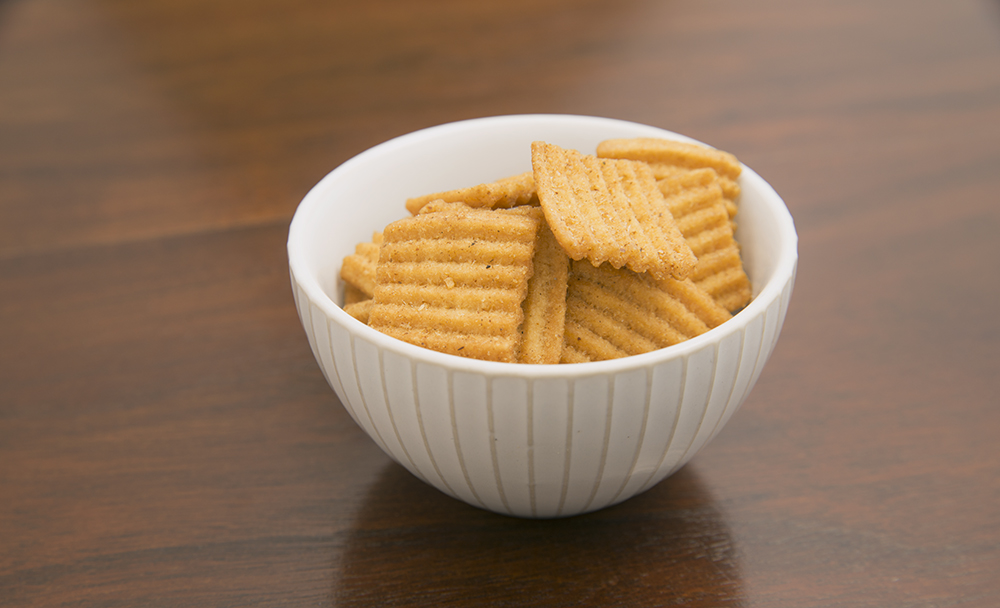
Daship – Shizuoka Okara Chips
Daships are a famous snack made with soybean pulp (okara). It’s a byproduct of tofu and soymilk production.
Yamahira Suisan is the producer of this otsumami. And this coastal Shizuoaka producer has been making high-end dashi for 70 years.
This popular sakana uses local mackerel and bonito as a unique flavoring agent.
Yamahira Suisan combines okara with wheat and infuses it with a saba and katsuo dashi. It’s then fried in rapeseed oil to make these crunchy snacks.
What Do Daships Taste Like?
Daships smell like the sea. There are notes of salty seaweed, katsuobushi, and paprika.
They have a very crunchy texture. And Daships taste like an elegant dashi broth. They’re also slightly sweet with notes of cinnamon.
These savory snacks are best on their own.

Daships Pairings
I loved Daships with sake. The fruity ones were great. But it was the more savory grades like junmai and honjozo that really stood out.
Beer was another rockstar pairing. Every single light lager I tried was a hit. Dry and clean Asahi Super Dry was my favorite. It was the ultimate palate cleanser and highlighted each new Daships bite.
But you could certainly go for a darker beer that matches the umami of Daships. Roasty styles like British pale ales and ESB are recommended.
Kumamoto rice shochu was another excellent drink pairing. It accentuated the sweetness of Daships and enhanced the mild fruity quality of the shochu. Sweet potato shochu was also tasty.
And there are a number of wine pairings that will work with Daships. This Shizuoka snack isn’t just savory – it also has spicy undertones. Barrel-aged whites like Chardonnay and Viognier make nice pairings.
But the standout wine for me is sherry. Dry styles like fino and amontillado are excellent with Daships.

Buy the Otsumami Care Package
Kokoro will ship their Otsumami Care Package to you directly from Japan. Shipping is fast and included in the price.
As an affiliate advertiser for Kokoro Care Packages, I may receive a commission from purchases made through this post. This supports my blog but adds no cost to you.
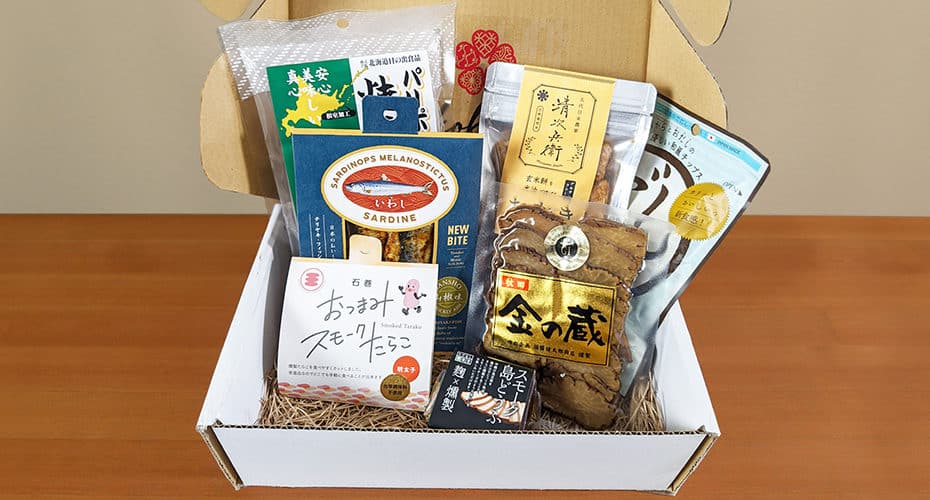
Thank you for this incredible review of Kokoro Care Packages’ recently released Foods That Pair With Alcohol: “Otsumami” Care Package. Your detailed descriptions and pairing suggestions really create a wonderful experience!
Hi Lillian,
I enjoyed all of the food. And trying so many drinks with the different snacks was a lot of fun!
Thank you,
Brad